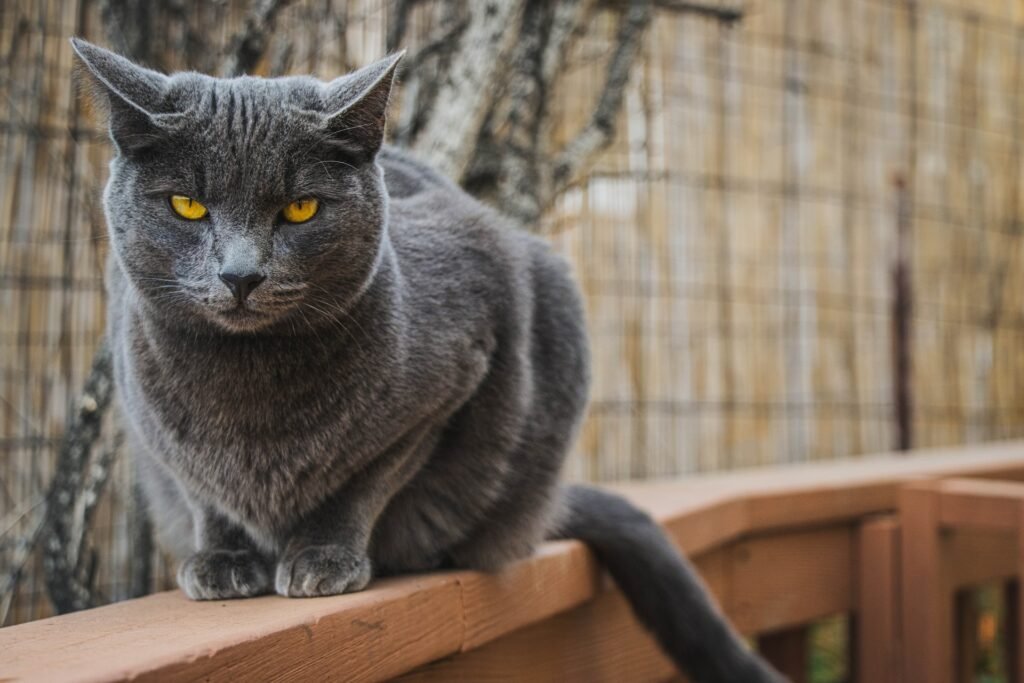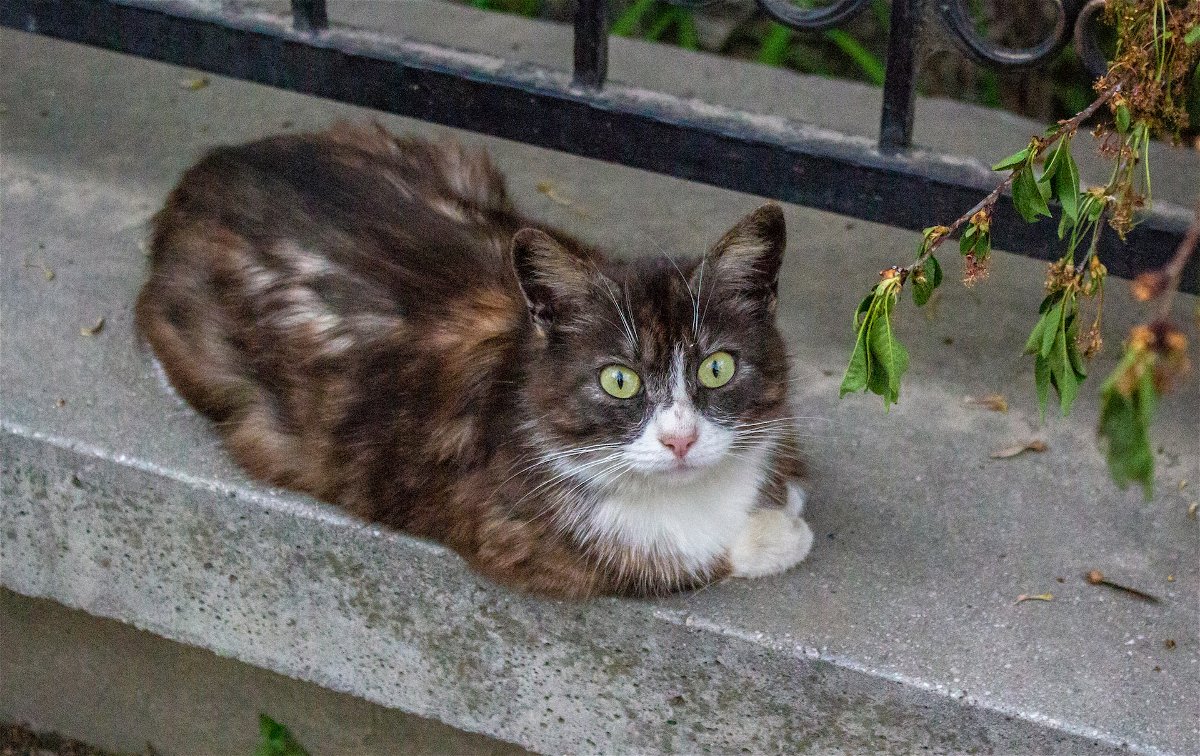We're an affiliate
We hope you love the products we recommend! Just so you know, we may collect a share of sales or other compensation from the links on this page at no additional cost to you. Thank you if you use our links, we really appreciate it!
Even though smaller mammals have generally shorter lifespans, our good old feline friends are a little different.
So, how long do cats live? This question has bothered many responsible pet parents concerned about the expected longevity of their household felines.
In this guide, we will outline the average cat life expectancy, the impact of their living condition, and give an elaborate walk through the five different cat life stages.
How Long Do Cats Live? The Average Cat Lifespan
In today’s world, it is not surprising to see many cats living between 12 to 18 years, and some exceeding the 20-year mark.
The record of the longest-living cat is held by Creme Puff, who enjoyed a happy life for a whopping 38 years from August 1967 to 3rd August 2004.
Most experts agree that modern-day cats are living longer than ever, thanks to progress in feline medical care such as vaccines, improvements in nutrition, and the supportive care provided by pet parents.
The life expectancy of an individual cat is dependent on many factors such as genetics, overall care, and whether they’re living in outdoor or indoor conditions.
In addition to the above factors, purebred cats have a slightly longer lifespan compared to mixed-breed cats because the latter can carry hereditary health problems.
The longevity of a cat is also affected by breed-specific reasons. Examples of longest-living cat breeds include Maine Coons, while an example of a short-living cat breeds is the Exotic Shorthair.
Indoor vs Outdoor Cat Lifespan
The average lifespan of indoor cats is about 12-18 years. Some lucky ones can live a healthy life for 20 years or more.
On the contrary, outdoor cats generally live a shorter life of about 2 – 5 years compared to their house-dwelling counterparts.
The lifespan of outdoorsy cats can be cut in half or less because of exposure to infectious diseases, traumas, and parasites.
Allowing your cat unsupervised access to outdoor environments might put them at constant risk of traffic accidents or encountering larger predators.
These freely roaming cats are also hampered by the threat of ingesting toxic substances or getting into scuffles with feral animals which can lead to injuries.

However, this does not mean that you deny your housecat the benefits of getting enriched from various outdoor activities.
Make sure to put your cat on a leash when taking them around a pet-friendly outdoor area. It also helps to have your cat vaccinated and microchipped to make it easier to trace when they run off-leash.
What Are the Different Cat Life Stages?
Cats undergo different life stages that affect their emotional behavior and needs. Knowing these stages is important to be better placed in providing the best care for your furry friend.
1. Kitten [Birth to 1 year]

Kittenhood is the best stage to introduce your new furry friend to their immediate surrounding including other pets, children, and grooming activities.
A proper introduction, socialization, and basic training will set your young feline friend up for success in the years to come.
The first twelve months of your cat’s life are characterized by the most rapid and visible growth phase.
It’s prudent to provide your kitten with a high-quality diet specifically formulated for their growth and development.
Look out for the appropriate label of the Association of American Feed Control Officials (AAFCO) on your preferred kitten food indicating the nutritional profile to support growing kittens.
This is also the best phase to vaccinate your cat against common infectious diseases such as rabies. Your vet may also encourage you to neuter your pet during their kittenhood year.
2. Young Adults [1 – 6 years]

The young adult phase in cats typically ranges from 1 – 6 years and it typifies the period of full physical maturity.
Although cats at this stage are still playful, they have less calorie needs than kittens so they should be nourished on an adult cat food diet.
It’s important to practice portion control and weight management to prevent your young cat from putting up excess pounds which can lead to obesity and other chronic illnesses.
Many cats at this stage can be allowed to go outdoors on supervised occasions. So, keep up with all scheduled vaccines and recommended booster shots and provide efficient parasite control.
Plan on regular visits to the vet for regular physical examinations and medical tests for common conditions such as asthma and urinary stones.
Early diagnosis of chronic diseases can form the base for successful treatment or efficient long-term management.
The majority of adult cats aged 6 years and above are prone to dental issues and gum diseases which can be extremely painful and lead to extraction of the affected teeth.
You should therefore keep your cat’s teeth clean at all times by brushing and asking for professional help from a vet.
3. Mature Adult [7 – 10 years]

Cats are considered mature adults by the age of 7 human years which is equivalent to someone in their mid-forties.
Most mature adults are likely to adopt a sedentary lifestyle by mellowing and slowing down their playful nature.
Due to changes in lifestyle and habits, mature cats are more likely to add extra weight if their youthful diet remains the same.
You should carefully monitor your cat’s diet and ask for advice from a qualified vet nutritionist on how to feed your aging feline.
Some cats in this stage are also likely to get more active during nighttime while they spend most of their daytime in slumber.
Another behavioral change likely to be seen during this stage is in the bathroom habits. Some mature adults may no longer use the litter box properly while others may eliminate beside the box.
Some behavioral changes can be linked to early signs of cognitive dysfunction, arthritis, digestive problems, or kidney diseases.
Cats in this stage should have routine medical examinations and blood work at the vet’s office to monitor for early signs of chronic issues.
4. Senior [11 – 15 years]

Cats in their senior stage can be compared to humans at 60 years and above. The transition from mature to senior can vary depending on the individual cat.
Some cats will show subtle changes in their sleeping, eating, and grooming behavior while others can remain muscled for a few more years.
Most experts recommend that cats above 10 years should have regular blood tests and urine tests every 6 months because of increased relapse of body organs.
Most elderly cats are prone to high blood pressure because of significant changes in their kidney condition and blood vessels.
Cats at this stage will likely avoid jumping, perching, and fast-walking because of possible joint stiffness, inflammation, and pain.
5. Geriatric [15 years +]

Super senior cats above the age of 15 years deserve extra love and attention to make their advanced years as comfortable as possible.
Some lucky felines may reach this stage without showing significant signs of slowing down, but for most, it is the opposite.
Cats in their golden years have increased vulnerability to certain health conditions including overactive thyroid glands, kidney diseases, cognitive dysfunction, diabetes, cancer, liver disease, and heart disease.
The good news is that most of these diseases are treatable when diagnosed early and can be managed to reduce pain.
It’s best to pick an appointment with your vet once you notice anything unusual with your elderly cat at this stage.
Conclusion
In answering the question ‘How long do cats live’ we have also provided valuable insights about the five life stages of cats.
Although the average life expectancy of indoor cats is between 12 – 18 years, there’s so much you can do to ensure your feline friend lives to their golden years.
Always supervise your cat while outdoors and be attentive to the common signs of extended lifespan, ensuring their health and happiness.
Laura is the founder of Furs'n'Paws. She is a also a pet writer and expert with more than 20 years of experience of working with dogs and cats. She developed a very strong love for animals at a young age. Her passion led her to establish a thriving pet sitting and dog walking business in Dubai. As an expert in pet training, behavior, and nutrition, Laura is committed to helping pet owners and pet lovers by offering high-quality information on a wide range of topics.



No responses yet